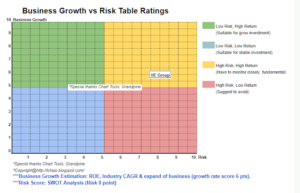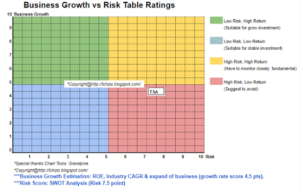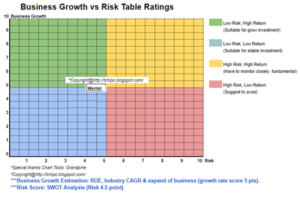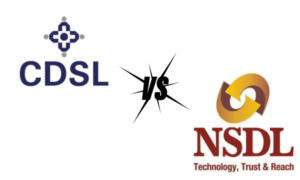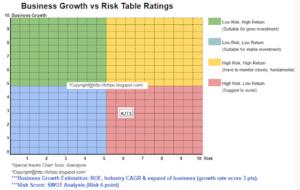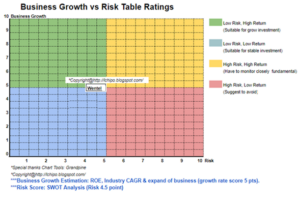Aurora Labs is one of a long list of ASX
pre-revenue IPO’s that achieved massive gains before crashing when the much-hyped
revenue failed to materialize. Listing
in August 2016, the stock peaked at just under $4 in February 2017 for a nearly
20X return and then lost 90% of its value over the next year. Recently though,
Aurora has been staging somewhat of a comeback. Their shares were trading at
around 36 cents in September of this year when they began to release
announcements regarding progress with their Large Format Printer. The market
reacted with predictable over-exuberance and within a few weeks the stock was
back over 90 cents. That investors have willingly jumped back into bed with a
company like Aurora is a pretty sad indictment of the Australian small cap
market. Aurora’s brief history on the ASX is a tale littered with failed
targets, unclear communication and a steadfast refusal to own up to any of
their mistakes. It is also a story worth knowing for anyone interested in
investing in pre-revenue stocks.
pre-revenue IPO’s that achieved massive gains before crashing when the much-hyped
revenue failed to materialize. Listing
in August 2016, the stock peaked at just under $4 in February 2017 for a nearly
20X return and then lost 90% of its value over the next year. Recently though,
Aurora has been staging somewhat of a comeback. Their shares were trading at
around 36 cents in September of this year when they began to release
announcements regarding progress with their Large Format Printer. The market
reacted with predictable over-exuberance and within a few weeks the stock was
back over 90 cents. That investors have willingly jumped back into bed with a
company like Aurora is a pretty sad indictment of the Australian small cap
market. Aurora’s brief history on the ASX is a tale littered with failed
targets, unclear communication and a steadfast refusal to own up to any of
their mistakes. It is also a story worth knowing for anyone interested in
investing in pre-revenue stocks.
Aurora labs was founded in August 2014
by David Budge, an engineer and product designer from WA when he posted on
Facebook that he wanted to start a rocket company. The rocket idea didn’t last
long, and the company quickly switched to 3D printing. If you are to believe
the official company version of events, within 18 months of that Facebook post
Aurora labs developed three separate revolutionary techniques for 3D metal
printing with major implications for reducing costs, increasing speed and
managing 3D printing software. What exactly these inventions were has never
clearly been articulated, but with a message as enticing and marketable as this
a public listing was inevitable and by June 2016 Aurora had launched their
prospectus to raise $3.5 million.
by David Budge, an engineer and product designer from WA when he posted on
Facebook that he wanted to start a rocket company. The rocket idea didn’t last
long, and the company quickly switched to 3D printing. If you are to believe
the official company version of events, within 18 months of that Facebook post
Aurora labs developed three separate revolutionary techniques for 3D metal
printing with major implications for reducing costs, increasing speed and
managing 3D printing software. What exactly these inventions were has never
clearly been articulated, but with a message as enticing and marketable as this
a public listing was inevitable and by June 2016 Aurora had launched their
prospectus to raise $3.5 million.
While the prospectus was largely focused
on returns far in the future, a key point in their initial pitch was their
Small Format Printer. This printer was designed to be substantially cheaper
than their competitors and was apparently already in beta testing with 31
secured pre-sales. The Small Format Printers price was listed in in the prospectus
at between $40,000 and $43,000 USD each, so this was a significant amount of sales
for such a young company.
on returns far in the future, a key point in their initial pitch was their
Small Format Printer. This printer was designed to be substantially cheaper
than their competitors and was apparently already in beta testing with 31
secured pre-sales. The Small Format Printers price was listed in in the prospectus
at between $40,000 and $43,000 USD each, so this was a significant amount of sales
for such a young company.
The shares listed on the 12th
of August 2016 at $0.20 cents and shot up in value quickly. In December 2016 they
announced that they were shipping their first unit of the Small Format Printer
to customers and by the 10th of February 2017 the share price had
reached a staggering $3.93, representing returns of just under 1,900% since
listing and a market capitalization of over $216 million.
of August 2016 at $0.20 cents and shot up in value quickly. In December 2016 they
announced that they were shipping their first unit of the Small Format Printer
to customers and by the 10th of February 2017 the share price had
reached a staggering $3.93, representing returns of just under 1,900% since
listing and a market capitalization of over $216 million.
As is the story with many pre-revenue
companies though, it was when the revenue was supposed to materialize that the
wheels fell off. On their quarterly activities report on the 28th of
April 2017 the company announced that they were now ready to focus on sales, as
they had completed the necessary certifications and testing to sell the Small
Format Printer internationally. Despite these assurances, cash flows from sales
for the March to June period was only $103,000 and dropped to $6,000 for the
next quarter. For a company whose product was apparently market leading with a
strong order bank of pre-sales this made no sense. How could a company selling
3D printers for $40,000 USD each take revenue of only $6,000 a quarter when
they apparently had an order bank of 30 pre-sales to fill?
companies though, it was when the revenue was supposed to materialize that the
wheels fell off. On their quarterly activities report on the 28th of
April 2017 the company announced that they were now ready to focus on sales, as
they had completed the necessary certifications and testing to sell the Small
Format Printer internationally. Despite these assurances, cash flows from sales
for the March to June period was only $103,000 and dropped to $6,000 for the
next quarter. For a company whose product was apparently market leading with a
strong order bank of pre-sales this made no sense. How could a company selling
3D printers for $40,000 USD each take revenue of only $6,000 a quarter when
they apparently had an order bank of 30 pre-sales to fill?
Investors looking for an answer had to
wait until November 2017, when the company finally admitted via a market update
that the much-vaunted pre-sales had been sold at a fraction of the current
prices. Instead of the $40,000 USD listed in the prospectus, the pre-sale
prices were for prices between $7,000 and $9,000 AUD. Given the retail price had
now risen to USD $49,999, Aurora labs was now deciding to cancel their
pre-sales and refund the prospective customers their deposits.
wait until November 2017, when the company finally admitted via a market update
that the much-vaunted pre-sales had been sold at a fraction of the current
prices. Instead of the $40,000 USD listed in the prospectus, the pre-sale
prices were for prices between $7,000 and $9,000 AUD. Given the retail price had
now risen to USD $49,999, Aurora labs was now deciding to cancel their
pre-sales and refund the prospective customers their deposits.
It is hard to understand how Aurora got
away with this announcement without a slap on the wrist from the ASX. Until
this announcement Aurora had given no indication that their pre-sales were for
anything less than their current proposed price, if anything they had worked
hard to give the opposite impression.
away with this announcement without a slap on the wrist from the ASX. Until
this announcement Aurora had given no indication that their pre-sales were for
anything less than their current proposed price, if anything they had worked
hard to give the opposite impression.
The below is a direct screenshot from
the prospectus, these two sentences come one after the other:
the prospectus, these two sentences come one after the other:
Any investor reading the above sentences
would have naturally assumed the pre-sale prices were somewhere around $40,000
USD. In addition to this quote the pre-sales are mentioned on 6 other occasions
in the prospectus, and not once is the fact that the pre-sales were sold at
heavily discounted prices disclosed.
would have naturally assumed the pre-sale prices were somewhere around $40,000
USD. In addition to this quote the pre-sales are mentioned on 6 other occasions
in the prospectus, and not once is the fact that the pre-sales were sold at
heavily discounted prices disclosed.
After listing, the company
continued to mention pre-sales in their announcements. In a January 2017
announcement the company stated that:
continued to mention pre-sales in their announcements. In a January 2017
announcement the company stated that:
For a product that’s main selling point
is its cheapness compared to its competitors, how does a sale at less than 25%
of the current market price indicate demand from “all corners of the globe?” It
is the equivalent of a new phone company using sales of $200 smart phones as
evidence for demand of an identical model at $800.
is its cheapness compared to its competitors, how does a sale at less than 25%
of the current market price indicate demand from “all corners of the globe?” It
is the equivalent of a new phone company using sales of $200 smart phones as
evidence for demand of an identical model at $800.
Another obvious question is why Aurora
waited until November to dishonour their pre-sales. At the time of their
prospectus their retail price was already considerably higher than the pre-sale
prices, yet the company waited more than 12 months before deciding to cancel
the pre-sale orders. The obvious explanation that they were keeping their pre-sales on
the book as long as possible to maintain their share price is hard to overlook.
waited until November to dishonour their pre-sales. At the time of their
prospectus their retail price was already considerably higher than the pre-sale
prices, yet the company waited more than 12 months before deciding to cancel
the pre-sale orders. The obvious explanation that they were keeping their pre-sales on
the book as long as possible to maintain their share price is hard to overlook.
Even leaving the pre-sales aside, Aurora
has made some dramatic promises regarding their Small Format Printer that have
failed to materialize. In April 2017, the CEO David Budge gave a speech at an
investors conference where he said:
has made some dramatic promises regarding their Small Format Printer that have
failed to materialize. In April 2017, the CEO David Budge gave a speech at an
investors conference where he said:
A lot of investors took notice of this
statement, as if true it meant the company was close to achieving annual
revenue of $18 million USD a year from the Small Format Printer alone.
statement, as if true it meant the company was close to achieving annual
revenue of $18 million USD a year from the Small Format Printer alone.
However when their annual report for
2017 was released more than 15 months later, revenue was only $329,970,
indicating sales of not even 1 device per month. In typical Australian small cap fashion,
not only does the annual report fail to explain why sales were so far off this
forecast, it doesn’t even acknowledge that this forecast was made.
2017 was released more than 15 months later, revenue was only $329,970,
indicating sales of not even 1 device per month. In typical Australian small cap fashion,
not only does the annual report fail to explain why sales were so far off this
forecast, it doesn’t even acknowledge that this forecast was made.
You might be wondering at this point why
I’m bothering to write about this. Another Micro Cap company played the PR game
and managed to pump the share price to a ridiculous valuation with a bunch of
promises that they never delivered on. Hardly a unique occurrence for the ASX.
It matters because too often the companies getting funding on the ASX seem to
be bad companies with good PR departments.
A central promise of capitalism is that money can be efficiently
allocated from those with money to those who need it. At it’s best, the share
market is an effective vehicle for getting money from investors into the hands
of companies with great ideas and limited funds. The reality is every dollar
spent funding or purchasing a stock of a hype company is a dollar not going to
a legitimate pre-revenue company, and there are a lot of legitimate pre-revenue
companies out there that desperately need money.
I’m bothering to write about this. Another Micro Cap company played the PR game
and managed to pump the share price to a ridiculous valuation with a bunch of
promises that they never delivered on. Hardly a unique occurrence for the ASX.
It matters because too often the companies getting funding on the ASX seem to
be bad companies with good PR departments.
A central promise of capitalism is that money can be efficiently
allocated from those with money to those who need it. At it’s best, the share
market is an effective vehicle for getting money from investors into the hands
of companies with great ideas and limited funds. The reality is every dollar
spent funding or purchasing a stock of a hype company is a dollar not going to
a legitimate pre-revenue company, and there are a lot of legitimate pre-revenue
companies out there that desperately need money.
The tendency of companies to make wild
predictions also puts pressure on other small business owners looking for
investment to be equally optimistic. A friend of mine owns a growing business
that has achieved impressive growth of around 40% a year for the last couple of
years. Their latest forecasts for 2019 increases this growth to nearly 100% for
FY18, yet investors so used to seeing forecasts like Aurora’s remain
unimpressed and have asked if there are any ways to increase this. For the
industry my friend is in, growth at more than 100% would likely have serious
affects on his margins and risk profile, but this is a difficult point to make
to investors habituated to start-ups promising multi-million dollar revenues in
years.
predictions also puts pressure on other small business owners looking for
investment to be equally optimistic. A friend of mine owns a growing business
that has achieved impressive growth of around 40% a year for the last couple of
years. Their latest forecasts for 2019 increases this growth to nearly 100% for
FY18, yet investors so used to seeing forecasts like Aurora’s remain
unimpressed and have asked if there are any ways to increase this. For the
industry my friend is in, growth at more than 100% would likely have serious
affects on his margins and risk profile, but this is a difficult point to make
to investors habituated to start-ups promising multi-million dollar revenues in
years.
As investors, we have a responsibility
to be more critical when presented with the next slick presentation light on
detail but big on promises. If this is asking too much then at the very least
we need to ensure that executives of small companies are held accountable for
their promises. When a CEO says that he is intending to sell 30 devices a
month, he shouldn’t be able to release an annual report 15 months later showing
total sales of less than 10 for the year without even bothering to address what
went wrong. And when that same CEO
starts making chest beating announcements about their latest product, the
market’s reaction should be a little more suspicious.
to be more critical when presented with the next slick presentation light on
detail but big on promises. If this is asking too much then at the very least
we need to ensure that executives of small companies are held accountable for
their promises. When a CEO says that he is intending to sell 30 devices a
month, he shouldn’t be able to release an annual report 15 months later showing
total sales of less than 10 for the year without even bothering to address what
went wrong. And when that same CEO
starts making chest beating announcements about their latest product, the
market’s reaction should be a little more suspicious.
Source: http://theiporeview.blogspot.com/2018/10/aurora-labs.html
- 3d
- activities
- announced
- Announcement
- Announcements
- April
- around
- Aurora
- Bank
- BEST
- beta
- BP
- Bunch
- business
- capitalism
- Cash
- ceo
- Communication
- Companies
- company
- competitors
- Conference
- Costs
- Couple
- Current
- Customers
- Demand
- Designer
- detail
- Devices
- Dollar
- dropped
- Effective
- engineer
- events
- executives
- Fashion
- Finally
- First
- Focus
- format
- funding
- funds
- future
- game
- good
- great
- Growing
- Growth
- history
- How
- HTTPS
- idea
- Increase
- indictment
- industry
- inventions
- investing
- investment
- investor
- Investors
- IT
- keeping
- Key
- Labs
- large
- latest
- leading
- light
- Limited
- List
- listing
- Long
- major
- Making
- March
- Market
- Market Capitalization
- Matters
- metal
- million
- model
- money
- months
- official
- order
- orders
- Other
- owners
- phones
- pr
- Predictions
- pressure
- price
- Product
- Profile
- public
- raise
- reaction
- Reading
- Reality
- report
- retail
- returns
- revenue
- Risk
- sale
- sales
- sell
- sense
- Share
- Shares
- Shipping
- small
- small business
- Small business owners
- smart
- So
- Software
- sold
- speed
- start
- Statement
- stock
- Stocks
- Testing
- The Future
- time
- Trading
- Update
- USD
- Valuation
- value
- vehicle
- wait
- WHO
- within
- worth
- year
- years



